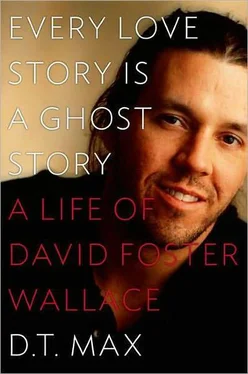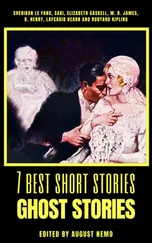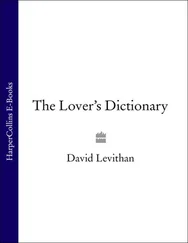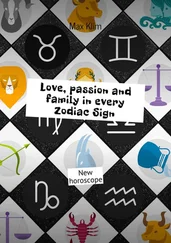Where Wallace didn’t find the remarkable, he invented or borrowed. He made use of interviews from his long-ago unpublished Playboy research. Premiere had asked a writer from Hustler , Evan Wright, to help out, and, with his permission, Wallace mined his research as avidly as his own. Wright told Wallace of a scene from two years before in which a porn star, angry at something he had written, put him in a headlock. For his article Wallace moved it to the present and improved the moment by giving Wright a pair of “special autotint trifocals” that the headlock sent “in an arc across the room and into the forbidding décolletage of Christy Canyon never to be recovered.” Wright had written in the LA Weekly about a woman at an industry charity bowling event who had valves under her arms through which she was slowly augmenting her bust size with silicone. Wallace turned them into air valves that would allow her to grow or shrink her breasts at whim, a character out of Philip K. Dick. In all, the convention left him with much the same feeling as the Caribbean cruise had: how sad the world was when you opened your eyes, how much pain it contained. “Some of the starlets are so heavily made up,” he wrote in the article, “they look embalmed. They have complexly coiffed hair that tends to look really good from twenty feet away but on closer inspection is totally dry and dead.” When he got back to Bloomington, he was relieved. He described his trip to DeLillo as “three days in Bosch’s hell-panel.” “I don’t think I’ll have an erection again for a year,” was his comment to Franzen.
Bit by bit Wallace scratched out enough short fiction so that by late 1997 he thought he had a new collection. He told Pietsch he was surprised how dark the stories were since he hadn’t been feeling “particularly dark” in the past few years. He knew that the mini-tales might not please all the readers of his last two books. They were funny but they were not playful or redemptive, qualities many readers had come to associate with his name. He immediately looked for reassurance that the publication of the collection would not become a replay of Infinite Jest , a chance for Little, Brown to cash in on what he called his “late 90s notoriety.” “I don’t think the book could stand up to that kind of hype,” he wrote Nadell. “It’d be slim, strange and a bit slight. A small book.” But the reflexive cast of his mind immediately set him to wondering whether his modesty meant he really didn’t think the book deserved readers at all. “Do I,” he asked Nadell, “secretly think it’s not strong enough to publish, meaning I should wait a few years or however long it takes to have some Bigger or more reader-friendly stories? Or am I a whore to think that way?”
With Wallace a desire to be published usually won out. Moreover, as he began organizing and revising the stories for a collection, he became more excited by how powerful they were as a group. They centered on fear, longing, anxiety, depression, and boundaries, the challenge of being human in an inhospitable time. Many of the stories examined courtship behavior — his, of course, which was particularly nauseating to him at times — but also the entire back-and-forth that he had witnessed between men and women, fortified by the many stories he’d heard in recovery and in relationships.
The set-up for the core of the collection is consistent: they are little plays, conversations, most between a woman and various men she is interviewing. The interrogator’s questions are never written, though; it is up to the reader to figure them out. 7The tales are designated only by place and date, as if they were jailhouse or psych ward interviews B.I. #59 04–98 HAROLD R. AND PHYLLIS N. ENGMAN INSTITUTE FOR CONTINUING CARE EASTCHESTER NY B.I. #15 MCI-BRIDGEWATER OBSERVATION & ASSESSMENT FACILITY BRIDGEWATER MA. The men are not named.
One man tells a story to a friend about seeing a woman get off an airplane and wait at the gate for someone who doesn’t show; he picks her up, exploiting her disappointment. A second invites women to let him tie them up; he claims an almost perfect ability to sense which women secretly want to be dominated in this way, comparing it to “chicken-sexing.” 8In a third, a man uses his withered arm — his “Asset,” he calls it — to get women to sleep with him out of pity: “I see how you’re trying to be polite and not look at it,” he challenges the interrogator. “Go ahead and look though. It don’t bother me…. You want to hear me describe it? It looks like a arm that changed its mind early on in the game when it was in Mama’s stomach with the rest of me. It’s more like a itty tiny little flipper.” In a fourth, a man tells the interviewer that men who spend a lot of time focusing on the sexual needs of women—“going down on a lady’s yingyang over and over and making her come seventeen straight times and such”—are actually as narcissistic as men who only want to orgasm. “The catch is they’re selfish about being generous,” he lectures. “They’re no better than the pig is, they’re just sneakier about it.”
The men in the stories not only seem to feel nothing; they seem to feel nothing about feeling nothing. They have creepy amounts of self-awareness but no ambition for catharsis. Their hideousness is beyond question. But Wallace was also making a point about women and their endlessly disappointed hopes for sane connections in the era of relative equality (if indeed it was sane connections they wanted and didn’t just say they wanted). It was as if he were challenging women, saying, You think men are disgusting? I’ll show you disgusting men. “How exactly the cycle’s short pieces are supposed to work is hard to describe,” the narrator of one story, “Octet,” avers, addressing himself. “Maybe say they’re supposed to compose a certain sort of ‘ interrogation ’ of the person reading them somehow — i.e. palpations, feelers into the interstices of her sense of something, etc…. Though what that ‘something’ is remains maddeningly hard to pin down, even just for yourself as you’re working on the pieces.” Wallace would call the stories in a letter to his old Amherst teacher Andrew Parker “a parody (a feminist parody) of feminism,” though they were also a postmodernist parody of postmodernism, as one nameless male chauvinist makes clear:
Today’s postfeminist era is also today’s postmodern era, in which supposedly everybody now knows everything about what’s really going on underneath all the semiotic codes and cultural conventions, and everybody supposedly knows what paradigms everybody is operating out of, and so we’re all us individuals held to be far more responsible for our sexuality, since everything we do is now unprecedentedly conscious and informed.
“I see that Hal is not the last sad character you’ll be inventing,” Pietsch had responded to the first batch of stories he read, which Wallace sent in February 1997. Wallace added the remainder in mid-August 1998, just before he had to go back to teaching after his anxious sabbatical. He wrote his editor with uncharacteristic enthusiasm:
I feel pretty good about the mss.’s constituents and their order as they stand. I like the way they play off one another and the way certain leitmotifs weave through them (see for example the child-perspective-self-pity of “The Depressed Person” vs. the parent-perspective-self-pity of “On his Deathbed…Begs a Boon” vs. the more quote-unquote objective intrafamily pain of “Signifying Nothing” and “Suicide…Present,” or the way p. 149’s “Yet Another Example…(Vi)…. arcs back to “The Depressed Person,” etc.)
Publication was set for May 1999, at the end of the school term, so Wallace could tour.
Читать дальше












